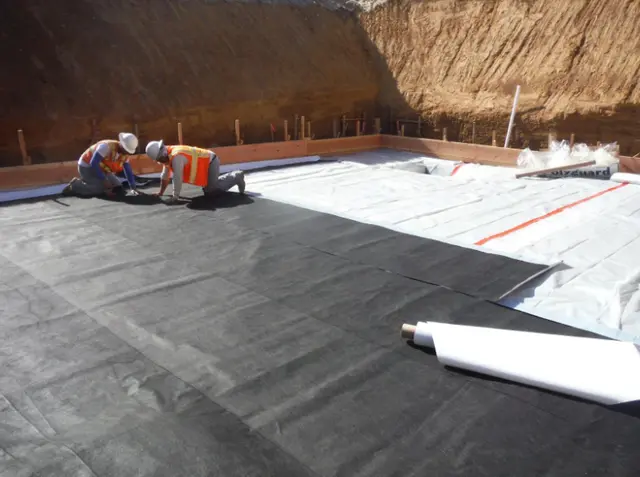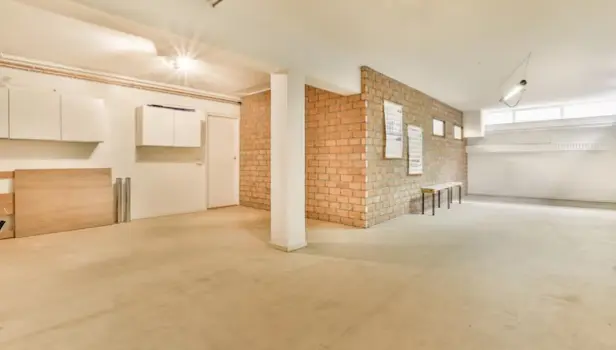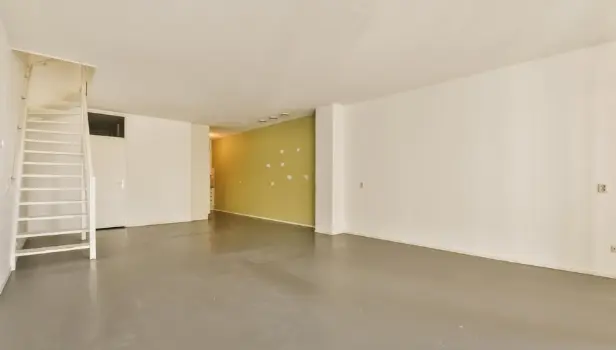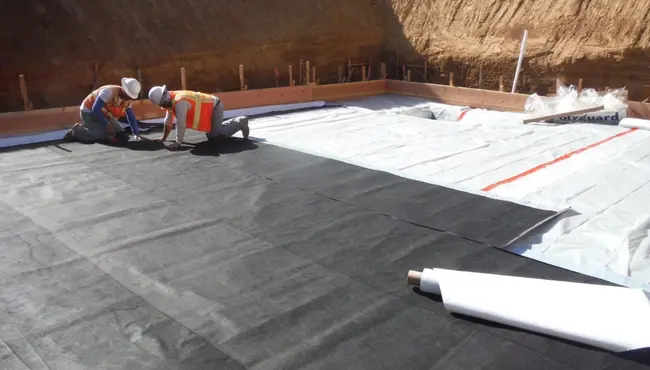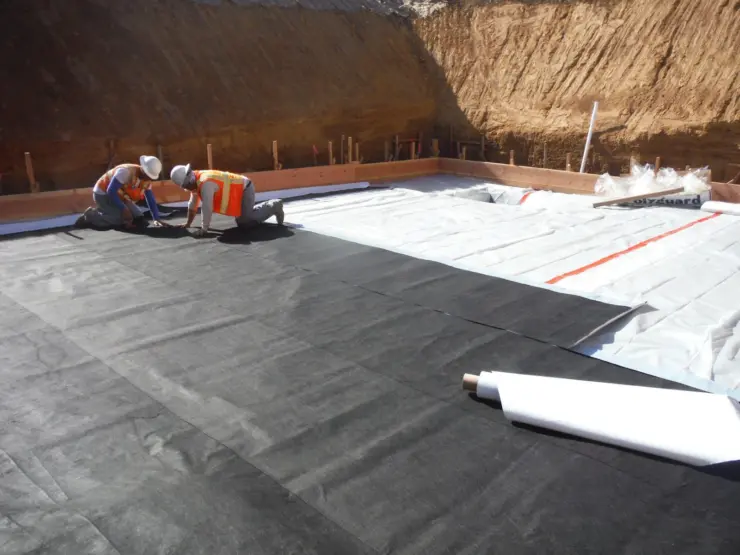
Basement waterproofing is key for safeguarding your home against moisture damage. Whether you are dealing with existing leaks or taking preventive measures, choosing between interior and exterior waterproofing solutions can be complex.
This article offers a detailed comparison of these methods, helping you make the best choice for your property.
Why Basement Waterproofing Matters
Waterproofing a basement is a key step in protecting a home from moisture-related damage, whether it’s caused by heavy rains, a high water table, or poor drainage. Basements are especially vulnerable to leaks and flooding, which can lead to mold growth, structural damage, and loss of personal property. As such, choosing the right waterproofing method is crucial for maintaining the longevity of your home. Homeowners typically face a decision between interior and exterior waterproofing methods, each offering unique benefits and addressing different types of moisture issues.
To prevent water from causing long-term damage inside a home, interior waterproofing solutions offer an effective way to manage and redirect moisture before it becomes a bigger problem.
Interior Waterproofing Explained
Interior waterproofing is typically installed along the inside of the basement walls. The most common components include sump pumps, French drains, and sealants. The process begins with installing drainage tiles along the perimeter of the basement floor. These tiles collect water and direct it to a sump pump, which then removes the water from the home.
Polyguard provides effective interior waterproofing products designed to manage condensation, mold growth, and structural damage. Additionally, vapor barriers and foundation sealants are applied to protect walls from further moisture exposure.
Benefits of Interior Waterproofing
- Non-invasive installation: Since the system is installed inside the basement, there’s no need for excavation, which minimizes disruption to landscaping.
- Cost-effective: Interior waterproofing is generally more affordable, with systems ranging from $1,000 to $5,500.
- Quick installation: Most systems can be completed within 1-2 days, providing fast relief for homes with existing moisture issues.
Limitations of Interior Waterproofing
While this method is effective for managing water once it enters, it doesn’t prevent water from seeping into the foundation. This approach is more of a reactive solution, dealing with water that has already found its way inside. Regular maintenance is required, such as ensuring sump pumps and drainage systems are clear of debris and functioning correctly.
When preventing water from entering the home is the primary goal, exterior waterproofing solutions offer a robust, proactive approach by addressing the issue at its source, outside the foundation.
Exterior Waterproofing Solutions
Exterior waterproofing is a proactive method that prevents water from entering the home by addressing potential issues outside the foundation.
How Exterior Waterproofing Works
Exterior waterproofing begins with the excavation of soil around the home’s foundation. This allows for the application of waterproof coatings, such as self-adhesive waterproofing membranes or liquid rubber, directly onto the exterior walls. In some cases, foundation or French drains are installed to redirect water away from the house. Proper yard grading is also crucial in preventing water from pooling around the foundation.
Why Choose Exterior Waterproofing
- Stops water at the source: By addressing water infiltration from the outside, this method creates a long-term solution, preventing water from entering the home.
- Ideal for severe water issues: Homes in flood-prone areas or with high water tables benefit greatly from exterior waterproofing.
- Increases property value: Well-maintained exterior waterproofing systems preserve the structural integrity of the home, making it more attractive to potential buyers.
Drawbacks of Exterior Waterproofing
- Higher upfront cost: Exterior waterproofing can be expensive, with costs ranging between $8,000 and $15,000, depending on the scope of the project.
- Disruption to landscaping: Excavation around the home can damage lawns, gardens, and driveways, adding to the overall cost of the project.
- Longer installation time: Exterior waterproofing projects generally take longer due to the extensive labor involved.
Understanding the costs associated with each waterproofing method is crucial for homeowners, as it allows them to balance their budget with the level of protection required for their specific situation.
Interior vs. Exterior Waterproofing: Cost Comparison
The cost difference between interior and exterior waterproofing is significant. Interior methods, such as installing sump pumps or sealing cracks, range from $1,000 to $5,500, making it a more affordable option for minor water issues. Exterior waterproofing, however, involves excavation and additional materials, which can result in higher costs of $8,000 to $15,000.
While interior waterproofing offers a quick, cost-effective solution, it may only address surface-level concerns. Exterior waterproofing, although more expensive, provides a more comprehensive, long-term solution by preventing water from entering the foundation. For homeowners weighing the long-term value of these methods, it’s important to consider how investing in waterproofing now can save significant repair costs down the road and protect the overall value of your home.
To make an informed decision, it’s important to clear up common misconceptions about basement waterproofing methods that could lead to ineffective solutions.
Myth-Busting Common Basement Waterproofing Misconceptions
When it comes to waterproofing your basement, there are several misconceptions that can lead homeowners to make costly or ineffective decisions. Here are a few myths to watch out for:
Myth #1: Sealing Cracks Alone Will Stop Water Infiltration
While sealing cracks can temporarily stop minor leaks, it doesn’t address the root cause of water infiltration. Water can still seep through the walls or floor due to hydrostatic pressure, which requires a more comprehensive waterproofing solution, like drainage systems or vapor barriers.
Myth #2: Exterior Waterproofing is Always the Best Solution
Exterior waterproofing is highly effective, but it may not be the right fit for every home. It requires extensive excavation, making it more expensive and disruptive. For homes with minimal water issues, interior waterproofing could be a more practical and less invasive solution.
Myth #3: Interior Waterproofing Only Manages Water After It Has Entered
While it’s true that interior waterproofing manages water inside the home, advanced systems, such as Polyguard’s moisture barriers and drainage solutions, prevent moisture buildup and protect walls from future damage. Interior systems can be just as preventive as exterior options in the right circumstances.
When deciding between interior and exterior waterproofing methods, it’s essential to understand how each approach manages or prevents water infiltration, ensuring the right level of protection for your home.
Water Control: Managing vs. Preventing Infiltration
The core difference between interior and exterior waterproofing is whether the system manages or prevents water infiltration. Exterior waterproofing is designed to stop water at the source, preventing it from ever reaching the basement. This makes it the most effective solution for homes that face constant water exposure or those located in high water table areas.
On the other hand, interior waterproofing focuses on managing water that has already entered the home. While it provides a functional solution for homes with minimal water intrusion, it is not suitable for severe water problems or high-risk areas. Homeowners must carefully consider their specific needs when choosing between these methods.
To ensure long-term effectiveness, both interior and exterior waterproofing systems require routine maintenance to keep them functioning properly and prevent future water issues.
Maintenance Requirements
Both interior and exterior waterproofing systems require ongoing maintenance to ensure they continue to perform effectively.
Interior Systems
Homeowners must regularly check sump pumps, clean drainage systems, and monitor humidity levels. Sump pumps, in particular, need to be checked periodically to ensure they are functioning properly, especially during periods of heavy rainfall. Vapor barriers should also be inspected for any damage or signs of moisture build-up.
Exterior Systems
For the exterior of the home, maintenance is primarily focused on ensuring that drainage membranes remain intact and that the yard grading remains sufficient to divert water away from the foundation. Gutters and downspouts must be kept clean to prevent water from pooling around the home, which could lead to damage even with a waterproofing system in place.
Regular inspections of both systems will keep the home protected from unexpected leaks or water damage.
When determining the best waterproofing system for your home, it's important to weigh factors like the severity of water issues, budget, and long-term goals to ensure the chosen solution provides the necessary protection.
Choosing the Right Waterproofing System
When deciding between interior and exterior waterproofing, homeowners must consider the extent of their water issues, budget, and long-term goals. Homes in flood-prone regions or with poor drainage should invest in exterior waterproofing to provide robust protection from the source. However, if the problem is minor seepage or condensation, interior waterproofing may offer a more affordable and less invasive solution.
For some homeowners, a combined approach may offer the most effective protection. Utilizing both interior and exterior systems ensures that water is prevented from entering the basement, while any moisture that does make its way inside is managed effectively.
Protect Your Home with Polyguard’s Waterproofing Solutions
Choosing the right waterproofing system is key to maintaining a safe and dry home. Polyguard offers a wide range of solutions, including both interior and exterior waterproofing systems, designed to protect your home from moisture damage. With decades of expertise in the industry, Polyguard provides products that deliver long-lasting results for all types of properties.
Contact us today for more information.
